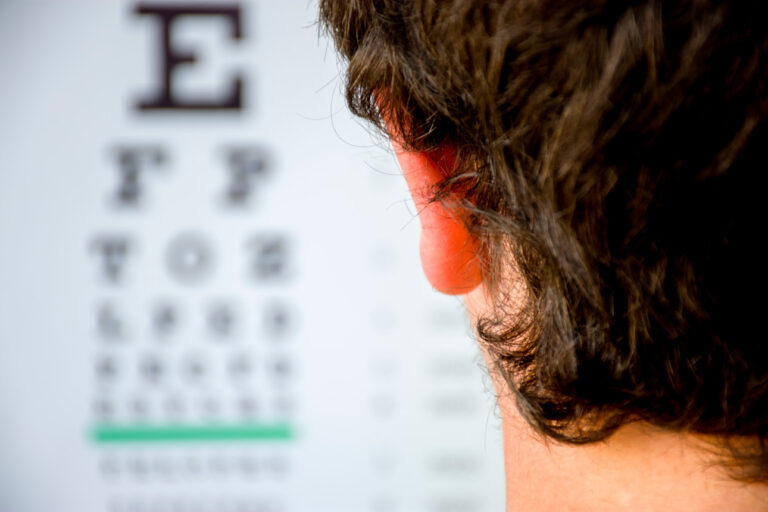Ocular pathologies
Myopia
What is Myopia?
Myopia is the condition whereby near objects are seen clearly, and distant objects are blurred, blurred or not seen at all. This results from a larger than normal length of the eye in its anterior posterior axis.
The cornea (which is the layer of transparent tissue in front of the iris at the pupil) is also more curved than it should be. It usually appears during childhood or adolescence and stabilizes during youth.
In general, it is suggested
refractive surgery,
in the case of patients between 20 and 65 years of age and a stabilized myopia with values ranging from -1 to -30 diopters.
What are the symptoms of myopia?
The most striking symptom is poor distance vision, with relatively good near vision. Poor night vision, the need to squint to try to focus on distant objects, and sometimes headache or visual fatigue are also common.
Types of Myopia
Myopia can be axial (due to either an increase in the length of the anteroposterior axis of the eye), curvature myopia (secondary to a high corneal curvature), or index myopia (due to an increase in the refractive index of the crystalline lens, which occurs for example in nuclear cataracts).
Causes of Myopia
There are several factors that explain the causes of myopia, among which are the:
-
Hereditary factors: The inheritance of myopia is multifactorial, not from a single gene. The odds of offspring being myopic are 30-40% with both myopic parents; 16-25% with a single myopic parent; and 10% with no myopic parents).
-
Environmental factors: There are studies that report that excessive use of accommodation, lack of outdoor activity, use of electronic devices, or lack of quality lighting can cause myopia, among others.
-
Pathological factors: There are diseases such as diabetes, cataracts, keratoconus, which can lead to myopia.

What are the degrees of Myopia
Refractive errors are measured in diopters. Myopia is classified as mild (up to 3 diopters); medium (up to 8 diopters); and magna (above 8 diopters).
Is Myopia degenerative?
Patients with magna myopia are more likely to suffer from degenerative changes due to the elongation of the posterior pole of the eye, with a higher prevalence of retinal tears and detachment, myopic maculopathy, etc., with which annual fundus examination is recommended. for visual health status assessment.
Difference between Myopia and Astigmatism
Myopia mainly produces an alteration in the perception of distant objects, while astigmatism produces a distorted vision of objects both far and near.
How Myopia is diagnosed
Myopia is diagnosed by performing a complete ophthalmologic examination, which includes graduation, visual acuity, biomicroscopy, intraocular pressure and fundus evaluation.
How to Operate Myopia
Myopia can be treated with different techniques depending on the refractive defect and age. The main ones are excimer laser techniques (PRK, Lasik and Femtolasik), phakic lenses (ICL or IPCL), and lens surgeries with monofocal, multifocal or toric lenses.

What is the best technique for myopia surgery?
The choice of the best technique for each patient is completely individualized, evaluating the different diagnostic tests available within the study that is done in consultation, which are, in addition to the complete ophthalmologic examination that includes visual acuity, refraction, intraocular pressure and fundus:
-
Dual elevation tomography with two different platforms (Pentacam AXL and Sisius MS 39).
-
Evaluation of corneal biomechanics with Corvis ST
-
Double biometrics
-
Aberrometric study
-
Endothelial count
When Myopia can be operated
Myopia can be operated on once refractive stability has been achieved , which means that the prescription has not changed by one diopter in the last year. It is usually reached between 20-25 years of age.
What is it like and how long does it take to recover from myopia surgery?
Recovery after an excimer laser technique (Lasik or femtolasik) is immediate, being able to lead a practically normal life from the day after surgery, following some minimum safety recommendations.
